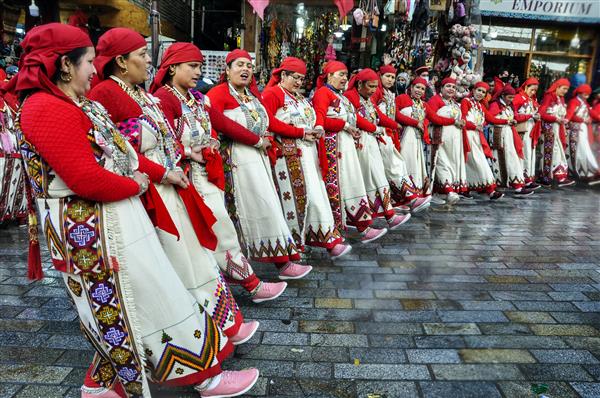Introduction:
Nestled amidst the majestic Himalayas, the Kullu Valley in Himachal Pradesh, India, is not just known for its breathtaking landscapes but also for its rich cultural heritage. One of the most vibrant aspects of this heritage is the traditional dance form known as Kulluvi Dance. This article explores the origins, significance, and intricacies of Kulluvi Dance, delving into its rhythms that echo through the valleys.
Origins and Cultural Significance:
Kulluvi Dance, also referred to as Kullu Nati, traces its roots deep into the cultural fabric of the Kullu Valley. It is believed to have originated centuries ago and has since been passed down through generations, evolving into a cherished tradition. The dance form is deeply intertwined with the religious and social practices of the region, often performed during festivals, weddings, and other auspicious occasions.
Distinctive Features and Dance Movements:
What sets Kulluvi Dance apart are its lively movements and colorful attire. Dancers, adorned in traditional attire, move in sync with the beats of the drums and the melodies of the flute. The footwork is intricate, with rhythmic steps that reflect the spirit of the valley. The dance is characterized by graceful gestures and swift movements, portraying various aspects of daily life, mythology, and nature.
Musical Instruments and Melodies:
Central to the enchanting allure of Kulluvi Dance are the musical instruments that accompany the performers. The sound of the dhol, a traditional drum, reverberates through the air, setting the pace for the dancers. The rhythm is further enhanced by the shehnai, a wind instrument, and the haunting melodies of the flute. Together, these instruments create a mesmerizing symphony that captures the essence of the valley.
Evolution and Contemporary Relevance:
While rooted in tradition, Kulluvi Dance has also evolved with time, adapting to changing cultural dynamics. Today, it continues to thrive not only as a cultural expression but also as a form of entertainment. Dance troupes perform at various cultural events, both within the valley and beyond, showcasing the rich heritage of the region to the world. Moreover, efforts are being made to preserve and promote Kulluvi Dance, ensuring that it remains an integral part of the valley’s identity.
Tourism and Cultural Exchange:
Kulluvi Dance plays a significant role in attracting tourists to the region, offering them a glimpse into the vibrant culture of the Kullu Valley. Visitors are often mesmerized by the colorful performances and the infectious energy of the dancers. Additionally, cultural exchanges and collaborations have furthered the global recognition of Kulluvi Dance. They foster appreciation and understanding across different communities.
Conclusion:
In essence, Kulluvi Dance embodies the spirit and soul of the Kullu Valley, celebrating its rich cultural heritage and traditions. Through its rhythmic movements and melodious tunes, Kulluvi Dance transports both performers and audiences alike to a realm where time stands still and the beauty of the Himalayas comes alive. Enchanting hearts and minds, it serves as a testament to the enduring cultural legacy of the valley.
For More Articles Click




